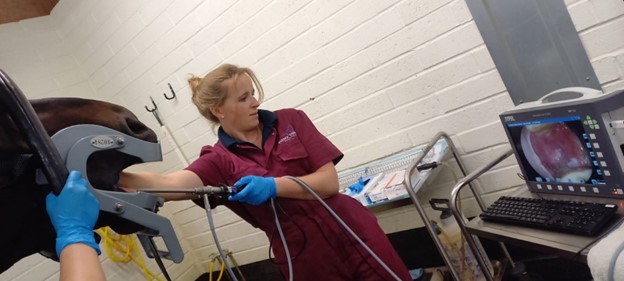Head CT scan interpretations
We offer an imaging interpretation service where advanced treatment options may be determined and offered.

Advances in Equine dentistry and maxillofacial surgery
Equine dentistry and maxillofacial surgery has come on in leaps and bounds in recent years and is currently experiencing a ‘golden age’ of sorts. The horse’s mouth remained an enigma until the advent of oral endoscopy, i.e. using a high-definition camera to explore the mouth. The ability to properly look inside the mouth has uncovered so many painful, debilitating and performance limiting conditions. Advances in 3D imaging have hugely improved our ability to diagnose and more effectively manage these conditions. Dentistry has become a hot topic, and a great deal of much needed research has hugely improved our knowledge and understanding of the horse’s head.
Extraction techniques have become far more sophisticated; older techniques, such as repulsion and lateral buccotomy carried complication rates of 27-80% and are now considered obsolete. Our aim is no longer to simply get the tooth out by whatever means necessary.…we now strive to preserve the alveolus during every extraction. Oral extraction is reported to have a complication rate of less than 4%, and at the Sussex Equine Hospital we approach every extraction with the intention to achieve an oral extraction where feasible. Where plan B is required, we employ minimally invasive transbuccal approaches and/or intra-oral tooth sectioning techniques. These less invasive approaches have revolutionised dental extraction in horses, allowing us to improve post extraction healing process and dramatically reduce complication rates.
Diastemata and the associated periodontal disease are considered to be the most painful chronic oral conditions. We approach quidding cases and other cases with signs of oral pain with a thorough head and oral investigation, employing oroscopy, endoscopy and radiography. Our management of diastemata involves careful assessment of the underlying cause and targeted treatment to manage the periodontitis. Where necessary, diastema widening or extraction may be resorted to.
Endodontic techniques and procedures to save teeth with pulp exposure or pulpar disease are improving in horses. We are now very successful in saving fractured incisors and progress is being made in developing techniques to salvage cheek teeth.
Sino-Nasal Disease
There was an old joke which previously held a lot of truth….’what’s the difference between sinusitis and love? Sinusitis is forever!”.
Thankfully, this belief is gradually turning to fallacy. Our appreciation of the complexity of design of the horse’s sinus compartments has grown enormously since the development of advanced imaging techniques. As a result, we can now reliably achieve long term cure in the vast majority of sinusitis cases. We focus on identifying the aetiology and then opt of far less invasive approaches sino-nasal disease thanks to this improved understanding of the anatomy. The previously commonplace sinus flap surgery has largely been replaced my more carefully targeted sinoscopic techniques. Not only do we achieve better results these days, but with less invasive techniques, post operative complications are less severe and far less common.